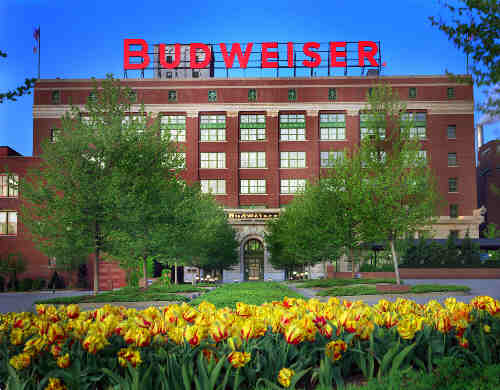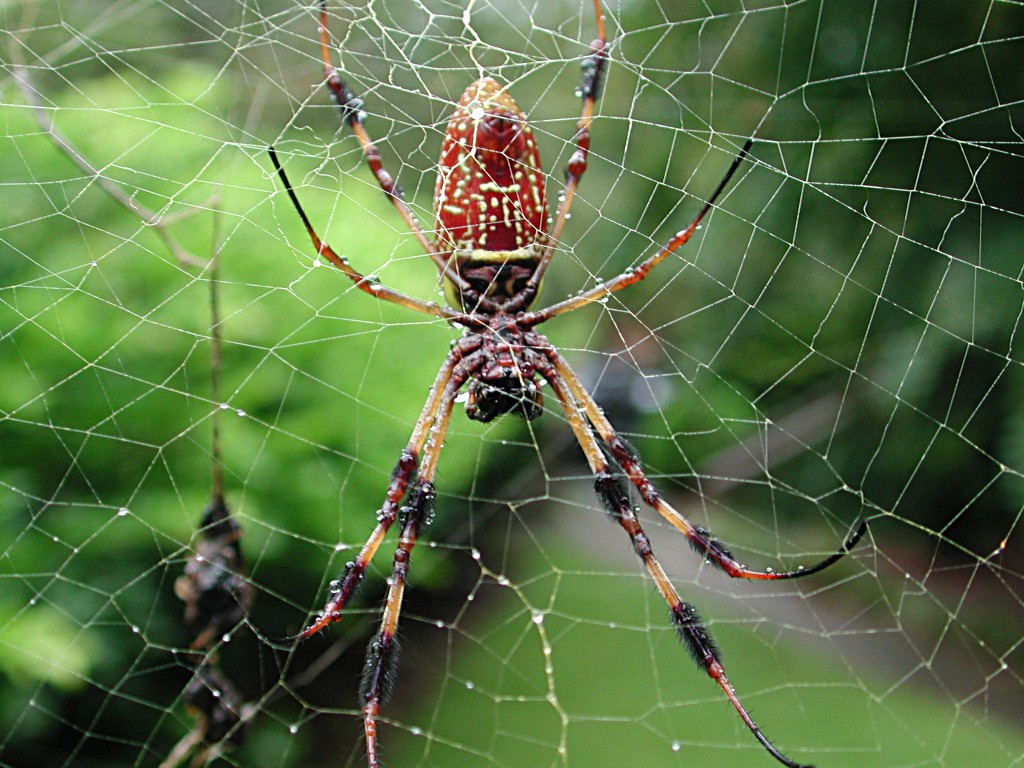 Beer and alligators? Sounds like a dangerous mix, or, at the very least, the beginning of a bad Cajun joke. For Anheuser-Busch’s (whoops… Anheuser-Busch InBev‘s) Jacksonville, FL brewery and turf farm, this mix of wildlife and business has been standard for eleven years. The Jacksonville facility is one of ten A-B operations certified as Wildlife at Work (SM) sites by the Wildlife Habitat Council.
Beer and alligators? Sounds like a dangerous mix, or, at the very least, the beginning of a bad Cajun joke. For Anheuser-Busch’s (whoops… Anheuser-Busch InBev‘s) Jacksonville, FL brewery and turf farm, this mix of wildlife and business has been standard for eleven years. The Jacksonville facility is one of ten A-B operations certified as Wildlife at Work (SM) sites by the Wildlife Habitat Council.
The WHC is a twenty-year-old partnership between corporations (A-B was a founding member) and environmental organizations (the American Farmland Trust, Izaak Walton League of America, National Wildlife Federation and World Wildlife Fund). The organization was founded in order to “…[help] large landowners, particularly corporations, manage their unused lands in an ecologically sensitive manner for the benefit of wildlife.” The Wildlife at Work program not only certifies wildlife restoration programs, but also provides step-by-step training for companies interested in making unused lands more friendly to animal and plant life.
A-B’s other facilities certified by Wildlife to Work are:
- Elk Mountain Farms (Bonners Ferry, Idaho) — certified since 1998
- Manitowoc Barley Malt Plant (Manitowoc, Wis.) — certified since 1999
- Jonesboro Rice Mill (Jonesboro, Ark.) — certified since 2001
- Ft. Collins Brewery (Fort Collins, Colo.) — certified since 2006
- Ft. Collins Nutri-Turf Farm (Fort Collins, Colo.) — certified since
2001 - Rome Can Plant (Rome, Ga.) — certified since 2002 Cartersville Brewery (Cartersville, Ga.) — certified since 2004
- Merrimack Brewery (Merrimack, N.H.) — certified since 2007
- Baldwinsville Brewery (Baldwinsville, N.Y.) — certified since 2008
In addition, A-B facilities are certified by WHF as Corporate Lands for Learning (SM) sites, which signifies they “…serve as educational resources in the communities in which they are located for local educators and wildlife researchers. These sites are:
- Elk Mountain Farms (Bonners Ferry, Idaho) — CLL site since 2000
- Cartersville Brewery (Cartersville, Ga.) — CLL site since 2006
- Jonesboro Rice Mill (Jonesboro, Ark.) — CLL site since 2005
- Fort Collins Brewery and Nutri-Turf Farm (Fort Collins, Colo.) — CLL site since 2007
- Jacksonville Brewery and Nutri-Turf Farm (Jacksonville, Fla.) — CLL site since 2008
Is there bottom-line motivation for such efforts. Hard to say… obviously, land and wildlife preservation efforts would be much harder to tie to either profitability or cost saving like, say, renewable energy implementation. That doesn’t mean there isn’t payoff, of course: WHF notes several environmental and business benefits that come from these programs, including
- Improved employee morale
- Stronger community relations
- Increased public recognition
- Potential for cost savings
- Better relations with regulatory agencies
- Compliance with ISO 14001 standards
- Enhanced wildlife habitat
- Protection and restoration of biodiversity
- Opportunities for environmental education
As you might imagine, we’ve been hearing a lot about the potential downside to A-B’s takeover by Belgian brewer InBev here in St. Louis, and one concern that continues to come up is A-B’s strong corporate citizenship, both locally and around the country. Let’s hope the new owners continue to participate in programs like these, as it’ll give some people just one more reason to order a Budweiser when they’re out on the town.
Of course, other members of WHC include DuPont, ExxonMobil, GE, Tenneco Oil Company and United States Steel Corporation. Are there greenwashing concerns here? Fire away…
Source: MarketWatch
Image source: Anheuser-Busch



Gotta be a “Green-Wash” Now if they were taking factory effluents and cleaning them up to drinking grade water using plants like the Chinese have done for centuries, and like the may “Arks” around the U.S. are currently doing, we could count merit in the effort! If they were developing methodology that could be transferred to others for free, private or otherwise, this could be considered an effort on behalf of the environment! If they were feeding the poor from the gardens, and improving life for common folk with fresh veggies, it would have its pluses! Come on companies! jump on the anti-depression bandwagon and hand out plots of arable garden space and give some effluents a chance to serve mankind and the environment instead of grandstanding for brownie points and quitting their. You can do it!
Gotta be a “Green-Wash” Now if they were taking factory effluents and cleaning them up to drinking grade water using plants like the Chinese have done for centuries, and like the may “Arks” around the U.S. are currently doing, we could count merit in the effort! If they were developing methodology that could be transferred to others for free, private or otherwise, this could be considered an effort on behalf of the environment! If they were feeding the poor from the gardens, and improving life for common folk with fresh veggies, it would have its pluses! Come on companies! jump on the anti-depression bandwagon and hand out plots of arable garden space and give some effluents a chance to serve mankind and the environment instead of grandstanding for brownie points and quitting their. You can do it!